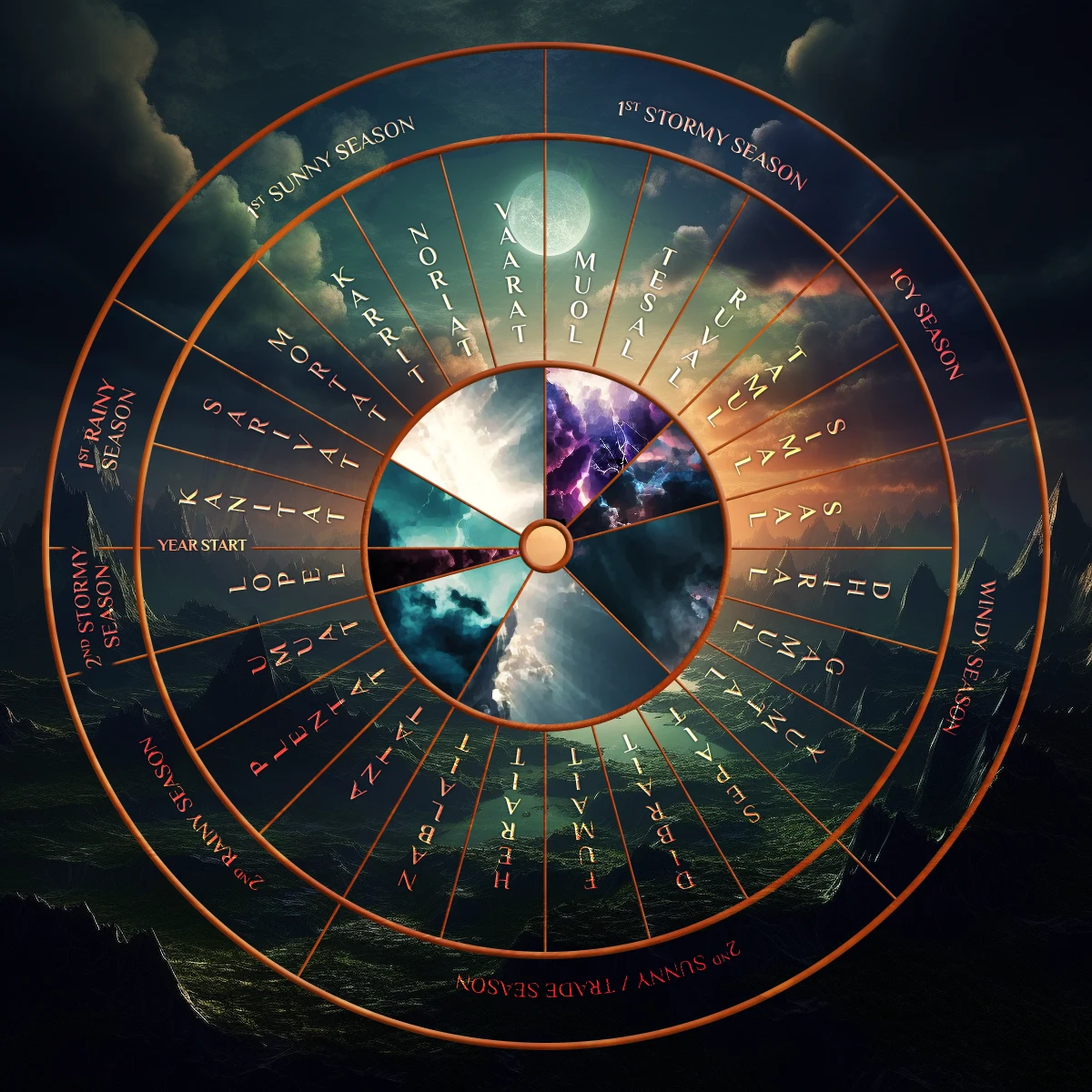Day & Night Cycle
On Anarand’aris, the day-night cycle has 16 partitions, equally split between day and night. One partition is equal to a little more than one Terran hour and comprises 8 segments. Each segment comprises 16 minutes, which are just over half the length of the Terran ones. The minute is the smallest unit of time used in modern Anarand.
Anarand’aris is a world with two suns—Niatema, a white giant, and Kalys, a small red dwarf. Besides them, there are also two large moons—the twins Ria and Tot. Ria is also called the bright moon because it emits its own cold, albeit faint, silvery light. Unlike her sister, Tot is called the black moon, as she has the unusual ability to absorb all natural light from the world.

Niatema
Niatema is the great white sun of Anarand'aris, primary source of heat and light.
In Anarand’aris, there is no true sunrise and sunset of the celestial bodies, as they are not physical moving objects, but natural phenomena specific to the Blossom. Instead, they appear and disappear from the sky in accordance with certain natural laws in a spectacular way. Therefore, in common speech the appearance of Niatema, Kalys, and Ria is referred to as “blooming”, while the disappearance is known as “withering”. For Tot, however, the used terminology is “opening” and “closing” respectively, similar to describing a celestial eye. These verbs reflect closely the visual artefacts created in the sky by the celestial bodies.
The day in Anarand’aris begins with the 1st and ends with the 8th partition, but in reality Niatema begins to bloom approximately one segment later and begins to wither just as early. Kalys, by contrast, is in the sky for more than ten partitions, blooming sometime between the middle of the 15th and the beginning of the 16th partition, depending on the season, and withering somewhere between the end of the 9th and the middle of the 10th partition. Nevertheless, its light is so weak in itself that the period from the 9th to the 16th partition inclusively is considered night time.
Ria is in the sky throughout the night, but like the white sun, it appears one segment later and disappears one segment earlier. This is the cause of a peculiar natural phenomenon at the boundary between day and night, called Blood Dusk and Blood Dawn. For two full segments, the only visible celestial body is Kalys, and Anarand’aris is plunged into a crimson twilight caused by its dim red light.
Tot, in turn, opens in the sky during the 12th and 13th partitions of the night, and then the world is plunged into a pitch darkness. This period is called the Dark, and until Tot has closed, the inhabitants of Anarand usually avoid doing anything in the open, because even artificial light seems many times weaker.
Calendar
A year on Anarand’aris follows a perpetual cycle that has remained unchanged since the creation of the world. It comprises 384 days spread over 24 months, with each month including exactly 16 days. The months are grouped into 8 seasons according to the weather they carry with them. The year begins on the first day of the month of Kanitat and is called Year’s Break. This is a celebration that marks the beginning of yet another cycle in which the world continues to exist despite the efforts of the Chaos, and that is what people celebrate on this day.

Kanitat
The first month of the year, Kanitat, is almost halfway between the two Rainy Seasons. Storms have lessened in frequency and strength, but the weather continues to be wet, cool, and very unpleasant for both travel and outdoor work.
In the cycle of a year, Kalys is the only one of the Anarand’aris celestial bodies that changes its appearance and behavior. During the two Sunny Seasons, the small red sun nearly doubles in brightness and during these periods its face visibly enlarges. Then the temperatures in Anarand’aris rise noticeably. The opposite effect is observed during the significantly shorter Icy Season, when Kalys’s reduced brightness turns it into a small red star in the sky, and for a time Niatema remains the only active sun on this otherwise warm world.
